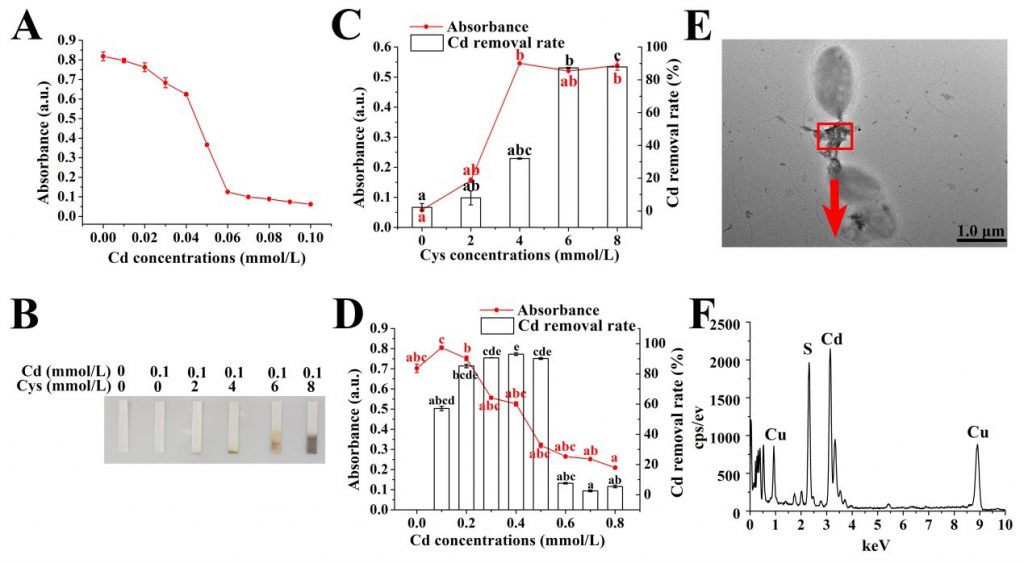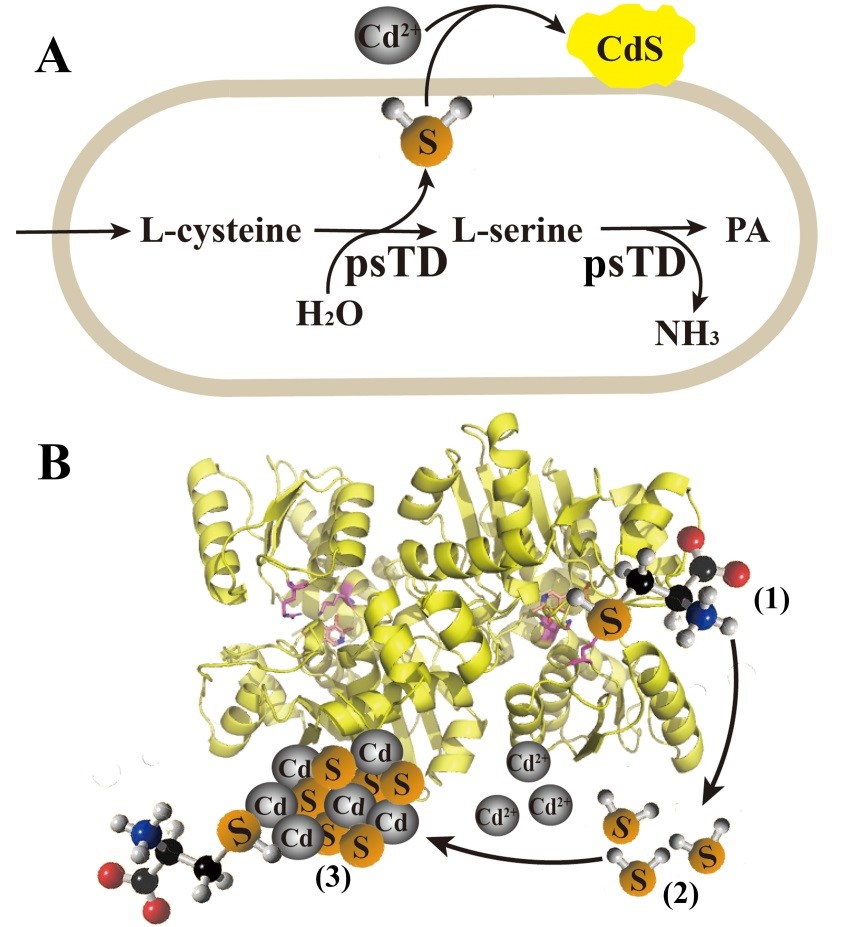Cadmium sulfide nanoparticles (CdS nanoparticles) have the characteristics of light absorption and autofluorescence, which are widely used in the fields of photocatalysis, optical applications, and biomedicine, and are the frontier hotspots of nanomaterials science. Journal of Hazardous Materials reported the research results of deep-sea microbial enzymes that can mediate the formation of cadmium sulfide nanoparticles alone. This study improves the efficiency of the formation of cadmium sulfide nanoparticles, simplifies the production process, and provides a new method and new biological enzyme resources for the biosynthesis of cadmium sulfide nanoparticles. It also provides a theoretical basis for explaining the special environmental adaptation mechanism of deep-sea microorganisms.

Heavy metal cadmium exists widely in the deep-sea environment, and deep-sea microorganisms have evolved mature and diverse mechanisms of cadmium tolerance to maintain their growth and reproduction in the cadmium environment. In addition, compounds coexisting with cadmium in the environment such as cysteine can significantly affect the cadmium resistance of deep-sea microorganisms. In the process of studying the mechanism of cadmium tolerance of Pseudomonas stutzeri 273, it was found that the presence of cysteine could effectively promote the formation of cadmium sulfide nanoparticles and significantly improve the cadmium resistance and removal rate of bacteria (Figure 1). Through proteomics and gene knockout methods, it was found that the threonine dehydrase (TD) produced by the bacteria had cysteine desulfurization activity, which participated in the process of cadmium tolerance by catalyzing the desulfurization of cysteine to produce hydrogen sulfide. Through the heterologous expression and purification of TD, it was further confirmed that the recombinant threonine dehydratase (rTD) still had cysteine desulfurase activity in vitro, and the process of its catalytic reaction was analyzed.

The cysteine desulfurization process catalyzed by rTD is divided into two steps: first, cysteine reacts with water to form L-serine and hydrogen sulfide, and then L-serine is deaminated to pyruvate and ammonia (Figure 2). Finally, the researchers established a single enzyme system for the biosynthesis of cadmium sulfide nanoparticles, which can efficiently catalyze the synthesis of cadmium sulfide nanoparticles with rTD as the catalysis enzyme, cysteine as the sulfur donor, and cadmium chloride as the cadmium donor. rTD not only acts as a catalytic enzyme to control the reaction process, but also has the role of coating, which can control the formation rate and particle size of cadmium sulfide nanoparticles. This strain of P. stutzeri has good mercury removal ability and can produce polysaccharides that inhibit the formation of biofilm of multi-drug-resistant P. stutzeri. It has good application potential in the field of environmental protection and biomedicine.
Ma, N., Cai, R., & Sun, C. (2021). Threonine dehydratase enhances bacterial cadmium resistance via driving cysteine desulfuration and biomineralization of cadmium sulfide nanocrystals. Journal of Hazardous Materials, 126102.
